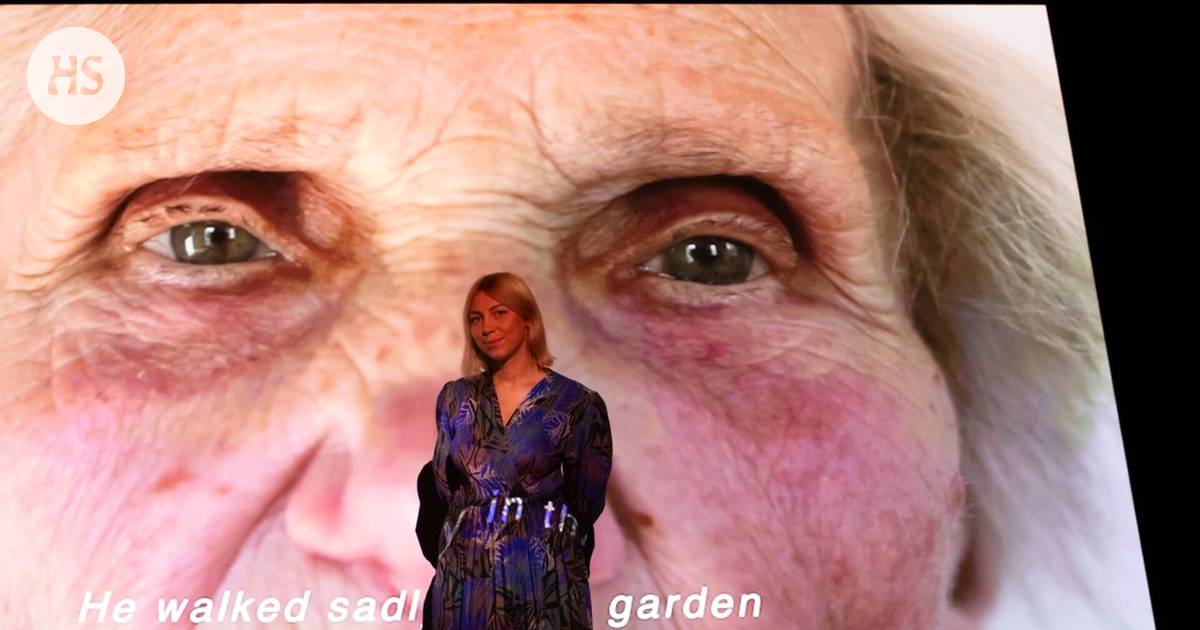Finland this year, the most valuable art award, the Ars Fennica, goes to a Lithuanian artist and filmmaker Emilia Škarnulytė36.
Ṧkarnulytė participated in the exhibition of Ars Fennica candidates currently on display at Kiasma with her work Aldona. The protagonist of its 13-minute video piece is Ṧkarnulytė’s Lithuanian grandmother. Aldona became blind in the spring of 1986. According to doctors’ estimates, the cause was the poisons that had spread into the environment from the Chernobyl nuclear power plant accident.
The video, completed in 2013, was shot in southern Lithuania in the area of the Suwalki corridor. In the video, Aldona is busy at home and travels to a theme park called Grutas Park, where statues from the time of the Soviet occupation have been collected.
Still image of Emilija Škarnulytė’s work Aldona.
Alun originally Ṧkarnulytė planned to participate in the exhibition with another work, but ended up with the work completed in 2013 additional to the updated version.
“I wanted to deal with the current world political situation and the war in Ukraine in some way as long as the situation is on. I revived my ten-year-old work by adding one more layer to it,” says Ṧkarnulytė.
additional the additional layer consists of medicinal herbs and the fragrance they create. The plants were collected by Ṧkarnulytė from Aldona’s home region, from the borderland of NATO country Lithuania and Belarus. From Yrti, Ṧkarnulytė built a green roof above the video viewing space.
”
Medicinal herbs remind us of adversity and suffering, but also of the possibility of recovery.
HS’s critic Aino Frilander’s according to a significant part of the work, the sense of smell arises. “The bouquets of medicinal herbs hung from the ceiling of the exhibition space take you to the landscapes of the video work following the artist’s grandmother’s day with their scent,” wrote Frilander in an article published in September.
Škarnulytė’s body of work also includes a kind of green roof.
According to Ṧkarnulytė, the medicinal herbs Aldona loves remind us of adversity and suffering, but also of the possibility of recovery.
Ṧkarnulytė likes Aldona as my most personal work.
“Aldona is a universal character who leads us through history without seeing it physically, but by touching it,” he describes.
“He is like an oracle. The character changes according to each viewer, and each viewer receives different guidance from him.”
Aldona died during the pandemic.
In others in his works, Škarnulytė has dealt with very slow changes. He looks at climate change from the perspective of an imagined archaeologist or geologist of the future.
The works often move in ecologically extreme places, such as North American deserts, Middle Eastern deserts, European nuclear power plants and Cold War bases.
Ars Fennica winner chosen this year by the director of the British Tate St Ives museum Anne Barlow. According to him, Ṧkarnulytė’s visionary approach can be seen in his films and immersive installations.
”[Ṧkarnulytėn teokset] are deep and multi-leveled both in terms of content and method. They cover topics such as climate change, the origin of species and extinction in ways that combine critical analysis and experimental imagination,” writes Barlow in the rationale.
According to Barlow, Škarnulytė sees the military bases and mines he describes as “monuments or wounds in the environment of the earth, raising questions about what they might communicate to future living beings about humanity, its values and goals”.
Which the second annual Ars Fennica prize is 50,000 euros. This time, the nominees were in addition to Škarnulytė Henni Alftan and Tuomas A. Laitinen from Finland, Lap-See Lam from Sweden and Camille Norment From Norway. At the end of the exhibition, an audience award will also be awarded, which visitors can vote for at the exhibition.
The award is given by the Henna and Pertti Niemistö Fine Arts Foundation. The joint exhibition of the Ars Fennica award candidates is on display at Kiasma until January 28, 2024.
